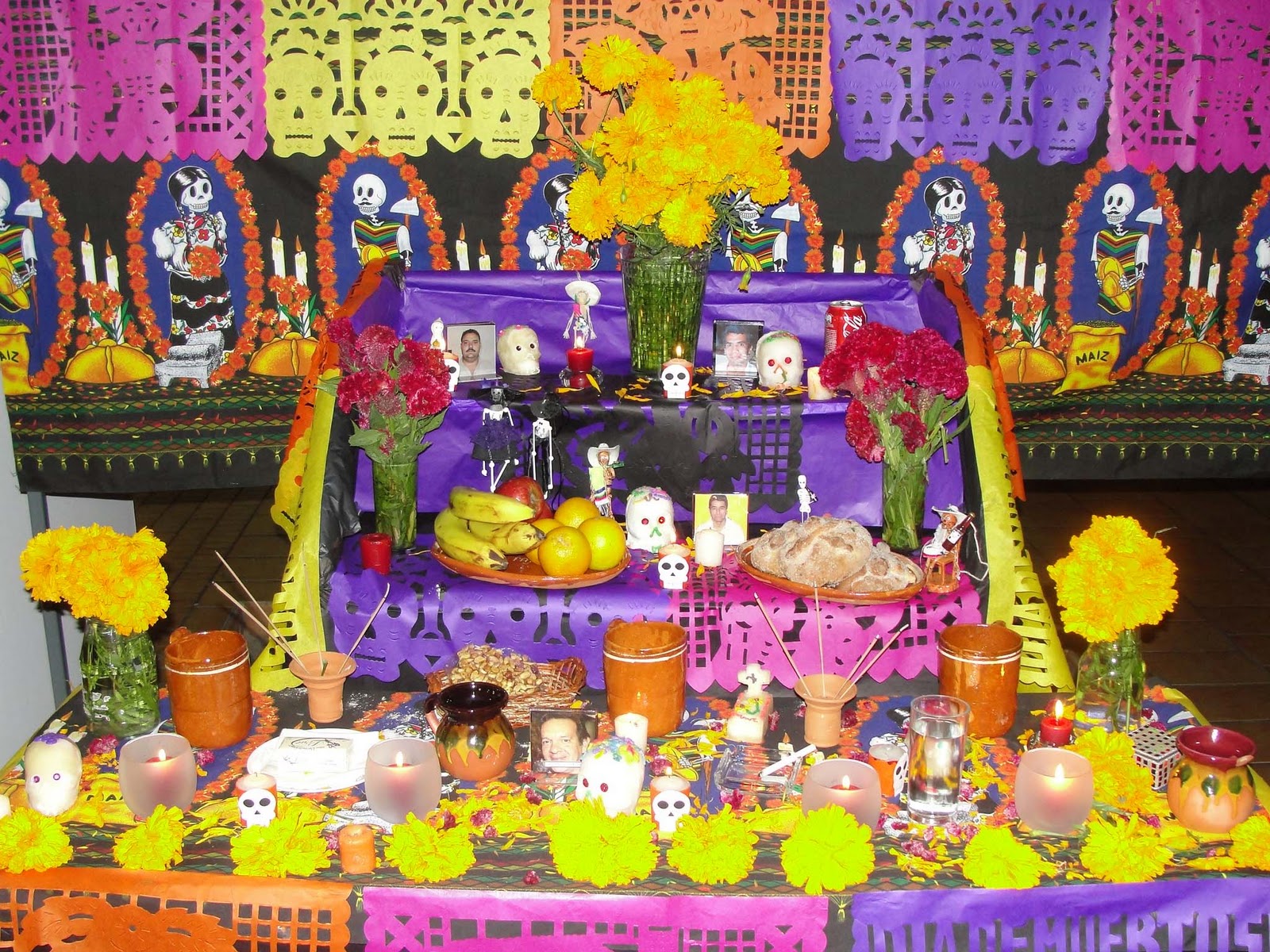

In what became known as Día de Muertos on November 2, the Latin American indigenous traditions and symbols to honor the dead fused with non-official Catholic practices and notions of an afterlife. Once the Spanish conquered the Aztec empire in the 16 th century, the Catholic Church moved indigenous celebrations and rituals honoring the dead throughout the year to the Catholic dates commemorating All Saints Day and All Souls Day on November 1 and 2. Skulls, like the ones once placed on Aztec temples, remain a key symbol in a tradition that has continued for more than six centuries in the annual celebration to honor and commune with those who have passed on. The Aztecs used skulls to honor the dead a millennium before the Day of the Dead celebrations emerged. The skull is used not as morbid symbol but rather as a whimsical reminder of the cyclicality of life, which is why they are brightly decorated.The Day of the Dead or Día de Muertos is an ever-evolving holiday that traces its earliest roots to the Aztec people in what is now central Mexico. This belief stems from the fact that the first monarchs arrive in Mexico for the winter each fall on November 1, which coincides with Dia de los Muertos.Ĭalaveritas de azucar, or sugar skulls, along with toys, are left on the altars for children who have passed. Monarch butterflies play a role in Dia de los Muertos because they are believed to hold the spirits of the departed. With their strong scent and vibrant color the petals are used to make a path that leads the spirits from the cemetery to their families’ homes. The marigold flower is often placed on ofrendas. Flowers, butterflies and skulls are typically used as symbols Candles are often left in the form of a cross to represent the cardinal directions, so the spirits can find their way.ĥ. Earth is represented by food, especially bread. Papel picado, or traditional paper banners, represent the wind. Water is left in a pitcher so the spirits can quench their thirst. They place down pictures of the deceased, along with items that belonged to them and objects that serve as a reminder of their lives.Įvery ofrenda also includes the four elements: water, wind, earth and fire. This temporary altar is a way for families to honor their loved ones and provide them what they need on their journey. The ofrenda is often the most recognized symbol of Dia de los Muertos. Like any other celebration, Dia de los Muertos is filled with music and dancing. Dia de los Muertos is an opportunity to remember and celebrate the lives of departed loved ones.

Rather than death ending life, they believed that new life came from death. Dia de los Muertos is often celebrated on November 1 as a day to remember children who have passed away, and on November 2 to honor adults.Īncient Mesoamericans believed that death was part of the journey of life. After the arrival of the Spanish, this ritual of commemorating the dead was intertwined with two Spanish holidays: All Saints Day (Nov. Certain months were dedicated to remembering the departed, based on whether the deceased was an adult or a child. It originated in Mexico and Central Americaĭia de los Muertos originated in ancient Mesoamerica (Mexico and northern Central America) where indigenous groups, including Aztec, Maya and Toltec, had specific times when they commemorated their loved ones who had passed away. While Halloween is celebrated October 31, Dia de los Muertos is celebrated right after, on Nov. Here are five things you should know about Dia de los Muertos: What do sugar skulls, marigolds and monarch butterflies have in common? Just like pumpkins, witches and black cats are quintessential symbols of Halloween, these objects are associated with a different holiday: Dia de los Muertos, or Day of the Dead.


 0 kommentar(er)
0 kommentar(er)
